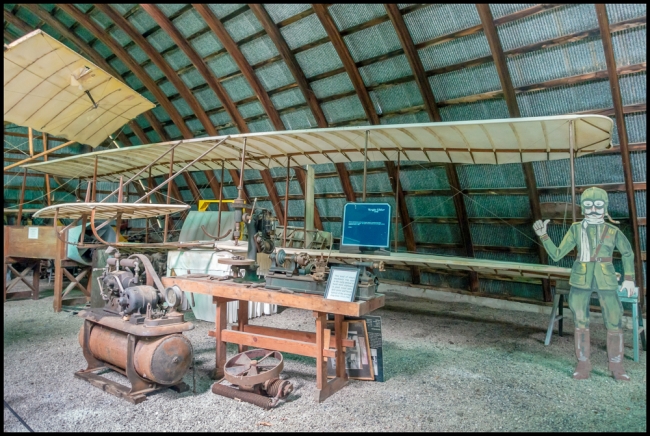According to Wikipedia:
The 1902 Wright Glider was the third free-flight glider built by the brothers. This was their first glider to incorporate yaw control by use of a rear rudder, and its design led directly to the powered 1903 Wright Flyer.
The brothers designed the 1902 glider during the winter of 1901/02. The wing design was based on data from extensive tests of miniature airfoils in their homemade wind tunnel. They built the components of the glider in Dayton and completed assembly at their Kill Devil Hills camp in September 1902. Flights took place between 19 September and 24 October. In order to cope with 1901 glider discovered adverse yaw, the Wrights tested a double fixed rear rudder, hoping improve turning control, but several times the pilot was unable to stop turning and collided with the ground. “The addition of a fixed vertical vane in the rear increased the trouble, and made the machine absolutely dangerous”. The brothers decided to remove one rudder, without success, then make the remaining rudder steerable to solve the problem. With this modification, they achieved a better control and made between 700 and 800 glides (as estimated by the brothers, who did not keep detailed records). The longest glide was measured and timed at 622.5 ft (189.7 m) in 26 seconds.
In September 1903 they brought the 1902 glider out of storage and made over 200 glides to hone their piloting skills while preparing the powered Flyer. One of their photographs shows they installed a second vertical fin as part of the steerable rear rudder, matching the original design and also that of the powered Flyer’s twin rear rudder. The glider was last flown in November 1903. After their successful powered flights, they put the glider back in storage at camp before returning home for Christmas. When they next visited Kitty Hawk in 1908 to test their improved Flyer III, Outer Banks weather had taken its toll: the storage shed and glider inside were wrecked.
Today a salvaged piece of wingtip from the 1902 Glider is preserved at the National Air and Space Museum a few feet from the 1903 Wright Flyer.
Taken with a Sony RX-100 M3.

